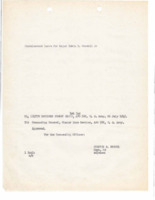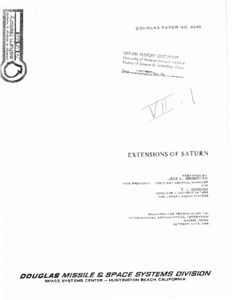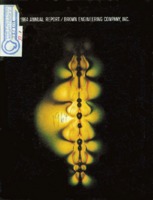
Browse Items (8239 total)
Sort by:
-
Letter to Oscar Goldsmith from S. D. Brewsters about yearly sales and inventory.
S. D. Brewster writes to Oscar Goldsmith in response to a previous letter in which Goldsmith sent earning statements for the Dallas Mnfg. Co. He details how the profit was lower than he had hoped and wish the treasurer, Mr. Rison, who had been sick and just returned from Minnesota, well. -
Correspondence between William Thomas Hutchens, W. E. Hodges, and Andrew J. Brittain.
Hodges writes to Hutchens, his cousin, requesting help as they have hit hard times as a drought wiped out his crops, and he has no money to buy groceries or clothes. Brittain then writes to Hutchens on behalf of Hodges almost two months later requesting Hutchens' help. Brittain writes again in June thanking Hutchens for the package he send Hodges. The final letter is Hodges writing to Hutchens thanking him for the package and detailing his crops success and failure. -
Agreement for the installation of galvanized roofing.
Agreement for the installation of galvanized roofing on a cotton shed occupied and rented by Gilbert Bros. from I. Schiffman and Co. at the request of Bettie Schiffman. Bettie's name appears on documents after July 1910 due to the death of her husband, Isaac. -
The Big Spring
Part of the Big Spring Park looking out over a fountain and a water way, with fields and trees in the background.
-
"Extensions of Saturn."
This paper discusses the possible applications of Saturn vehicles to future space exploration. Potential missions utilizing Apollo derived hardware are examined. Research, development, and operations in earth orbit as well as lunar exploration, unmanned and manned interplanetary exploration are reviewed. These hypothetical missions are discussed in the context of the present and potential capability of three configurations of the Saturn vehicle; an uprated Saturn I, a three-stage Saturn V and a four-stage Saturn V. NOTE: Work presented herein was conducted by the Douglas Missiles and Space Systems Division under company-sponsored research and development funds. Therefore, the concepts and objectives described within this paper reflect the opinions of the authors and do not necessarily constitute endorsement by NASA, the Air Force, or any other U.S. Government organization. The nominal performance numbers presented are typical of the current configurations and possible future vehicle configurations. -
"Application of the Saturn V Launch Vehicle to Unmanned Scientific Exploration of the Solar System."
According to the foreword, "This paper presents the results of a twelve-week mission and systems analysis of a combined Jupiter orbiter/solar probe mission utilizing the Saturn V launch vehicle."









